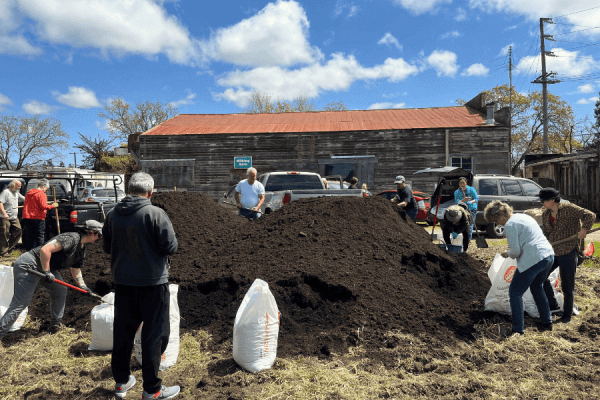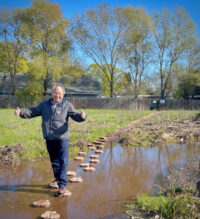First District Supervisor Susan Gorin recently noted that a partnership between local government, conservation districts and environmental groups has announced the completion of a pilot project that removed carbon from the atmosphere by applying compost on agricultural land, the first project initiated by Sonoma County’s Climate Resilience Fund.
The $500,000 project provided rebates that subsidized the use of compost at 16 local farms and ranches in 2023 and funded outreach to educate the public about the environmental benefits of composting. It removed the equivalent of 6,070 metric tons of CO2 from the atmosphere, which is roughly equal to taking 1,500 cars off the road for one year. Sequestering a similar amount of carbon in a single year would take 7,087 acres of forests.
“The completion of this pilot project marks a significant milestone in the County’s efforts to slow down climate change and adapt to its effects,” said Supervisor David Rabbitt, chair of the Sonoma County Board of Supervisors. “It is a testament to the power of investing in local partnerships to foster environmental stewardship and reduce emissions of greenhouse gases that are intensifying climate change.”
The initiative is the first to be completed with support from the County’s $10 million Climate Resilience Fund, which was created by the Board of Supervisors in 2021 using a portion of the funds the County received from PG&E to settle litigation over the 2017 wildfires.
“This project is a great example of what we can achieve when we bring together the significant climate and agricultural expertise in Sonoma County,” said Supervisor Lynda Hopkins, chair of the Regional Climate Protection Authority. “Not only does this carbon sequestration effort remove a significant amount of carbon from our atmosphere using composting techniques that farmers are familiar with, it also serves as an inspiration for other agricultural sectors and can generate new ideas to combat the local effects of climate change.”
Carbon sequestration is an important component of the mobilization strategy adopted by the Regional Climate Protection Authority, which was formed in 2009 to coordinate climate protection efforts among Sonoma County’s nine cities and multiple agencies. It also aligns with the County’s five-year Strategic Plan, which seeks to make Sonoma County carbon neutral by 2030.
Composting is a simple but effective tool to combat climate change. It diverts organic materials from landfills, where they break down and emit methane, an extremely potent greenhouse gas. Composting also promotes the growth of plants that take in carbon dioxide, removing this greenhouse gas from the atmosphere. Lastly, composting makes landscapes more resilient to the effects of climate change by retaining water during droughts and reducing erosion during extreme storms.
As a result of the pilot project, more than 5,000 tons of compost were applied on 442 acres of land in Sonoma County in 2023. In addition, partners staged seven events last year to educate the public about composting, the carbon cycle and soil health. More than 380 people attending these events learned valuable techniques about composting at home, the importance of utilizing municipal green bins, and the detrimental effects of sending organic waste to landfills.
The project is a partnership involving the County of Sonoma, the Sonoma County Regional Climate Protection Authority, Sonoma County Ag + Open Space, Daily Acts, Sonoma Resource Conservation District, Gold Ridge Resource Conservation District, Carbon Cycle Institute, and Zero Waste Sonoma.
For more information on the Carbon Sequestration through Compost Application Pilot Project, visit the Daily Acts webpage at www.dailyacts.org/carbon_and_compost_project.






Be First to Comment